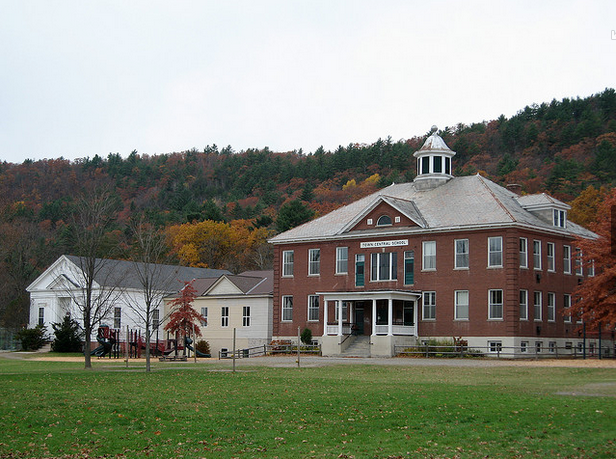He’s been called a threat, but the head of Vermont’s newest independent school says the state has nothing to fear from Village School of North Bennington, because it has achieved more while costing less to operate.
“Our independent school is operating on far less than $2 million dollars. We’re operating on about $1.8 million now,” Tom Martin said.
Before switching from public to private last year, the K-6 school located in southwestern Vermont operated on an annual budget of $2.1 million. Today, the school runs the same robust educational program as one year ago, but without the high cost of running within a highly bureaucratic system.
“We don’t have supervisory union administrative involvement, curriculum, resources, assessment or technology—all those services a supervisory union provides for districts, assesses them for, and in essence bills them for,” Martin said.
Don’t Try Anything Innovative
Martin doesn’t look threatening, but when the white-mustached head of the Village School helped it transition from public to independent last year, state officials, including the secretary of education, called the move “a threat.” Now the governor, legislature, and secretary of education are on a path to end education independence in Vermont by merging all schools—public and independent—into newly consolidated districts.
Daren Houck, the head of school for Mountain School at Winhall, said lawmakers should think twice before merging schools into consolidated districts.
“Private schools spend thousands less per kid and they are able to get outstanding quality,” Houck said. “It seems to me that a universal choice system would be able to provide good competition, and stabilize spending.”
For nearly 150 years, Vermont has allowed rural families to send kids to private schools using tax dollars. Today, approximately 11 percent of Vermont’s K-12 student population attends independent academies with a taxpayer voucher averaging $14,055 per student.
While Vermont has a long heritage of supporting independent academies, top officials seem worried more public schools will choose to go private. Shortly after Bennington residents voted to go independent, Martin received a call from the head of the Agency of Education saying their vote might be illegal.
“[Education Commissioner Armando Vilaseca] called my office around 4:30 on a Friday afternoon and left a voice mail asking questions about the ballot item. I remember at the time thinking to myself, ‘This is the commissioner of education calling the principal’s office of an elementary school, asking questions about a ballot item that was organized by the supervisory union?”
Declining Enrollment Threatens Union
Houck said declining enrollments and fewer public schools concern state officials.
When schools become independent, “that’s fewer public schools, and therefore they’re concerned about public school dollars and what they’re paying into the education fund to cover salaries of teachers,” he said.
Houck adds that declining enrollment also affects the number of teachers in the state.
“With lower student numbers you have the threat of less teachers. The [National Education Association, the nation’s largest union] definitely wants as many numbers as possible,” Houck said.
Martin said the ultimate root of the problem, however, is Act 68, the state’s education funding law.
“In very simplistic terms, Act 68 creates a relationship between enrollment and the amount of taxes people pay to support the school. The expectation of Act 68 is that if you have declining enrollment, you should have declining expenditures. If you have stagnant enrollment, you should have a stagnant expenditure profile,” he said. “But with schools that have a stagnant enrollment profile, the expenditures are not stagnant.”
Martin insists independent schools are a solution to the phenomenon of rising costs despite fewer students, and he urged lawmakers to look at alternatives to district consolidation.
“To people who are threatened by this, all I’ve ever asked is that the people who are responsible for education policy step back and have an open mind about what course may be the best in terms of the market that exists, which is declining enrollment and competition for resources,” he said.
“Look at different models. There may be other ways to run the schools more efficiently than the lockstep adherence to combining districts and making them larger and more centralized.”
Bruce Parker ([email protected]) is a reporter for Watchdog.org. Article reprinted with permission. Image by redjar.




